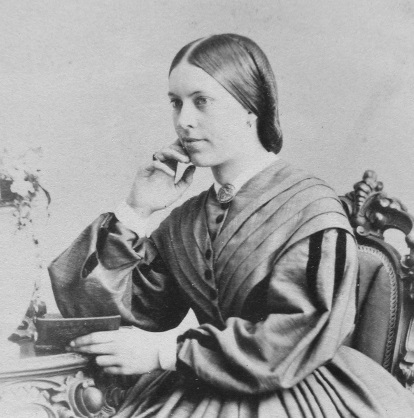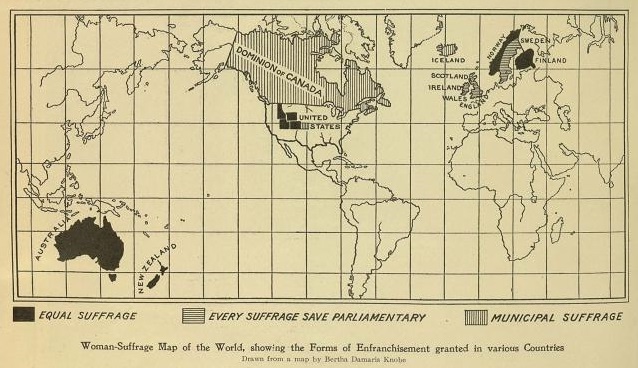|
Toronto Women's Literary Guild
The Canadian Women's Suffrage Association, originally called the Toronto Women's Literary Guild, was an organization based in Toronto, Ontario, Canada, that fought for women's rights. After the association had been inactive for a while, the leaders founded the Dominion Women's Enfranchisement Association in 1889. History The Toronto Women's Literary Guild was established in 1877 to fight for women's rights and for improved working conditions. Jessie Turnbull and Dr. Emily Howard Stowe, Canada's second licensed female physician, were founders. The guild had some success in improving access to higher education for women. It was renamed the Canadian Women's Suffrage Association in 1883 with Turnbull as its first president. The Toronto-based association worked towards opening up education to women, and allowing women to advance as professionals, particularly as doctors. After the association had been inactive for a while, the leaders founded the Dominion Women's Enfranchisement ... [...More Info...] [...Related Items...] OR: [Wikipedia] [Google] [Baidu] |
Women's Suffrage In Canada
Women's suffrage in Canada occurred at different times in different jurisdictions to different demographics of women. Women's right to vote began in the three prairie provinces. In 1916, suffrage was earned by women in Manitoba, Saskatchewan, and Alberta. The federal government granted limited war-time suffrage to some women in 1917 and followed with full suffrage in 1918, at least, granting it on same basis as men, that is, certain races and status were excluded from voting in federal elections prior to 1960. By the close of 1922, all the Canadian provinces, except Quebec, had granted full suffrage to White and Black women, yet Asian and Indigenous women still could not vote. In Newfoundland, at that time a separate dominion, women earned suffrage in 1925 for women not Asian and not Indigenous. Women in Quebec, who were not Asian and not Indigenous, did not gain full suffrage until 1940. Municipal suffrage was earned in 1884 to property-owning widows and spinsters in the provi ... [...More Info...] [...Related Items...] OR: [Wikipedia] [Google] [Baidu] |
Timeline Of Women's Suffrage
Women's suffrage Women's suffrage is the right of women to vote in elections. Beginning in the start of the 18th century, some people sought to change voting laws to allow women to vote. Liberal political parties would go on to grant women the right to vot ... – the right of women to vote – has been achieved at various times in countries throughout the world. In many nations, women's suffrage was granted before universal suffrage, so women and men from certain classes or Race (classification of human beings), races were still unable to vote. Some countries granted suffrage to both sexes at the same time. This timeline lists years when women's suffrage was enacted. Some countries are listed more than once, as the right was extended to more women according to age, land ownership, etc. In many cases, the first voting took place in a subsequent year. Some women in the Isle of Man (geographically part of the British Isles but not part of the United Kingdom) gained the r ... [...More Info...] [...Related Items...] OR: [Wikipedia] [Google] [Baidu] |
Feminist Organizations In Canada
Feminism is a range of socio-political movements and ideologies that aim to define and establish the political, economic, personal, and social equality of the sexes. Feminism incorporates the position that society prioritizes the male point of view and that women are treated unjustly in these societies. Efforts to change this include fighting against gender stereotypes and improving educational, professional, and interpersonal opportunities and outcomes for women. Feminist movements have campaigned and continue to campaign for women's rights, including the right to vote, run for public office, work, earn equal pay, own property, receive education, enter contracts, have equal rights within marriage, and maternity leave. Feminists have also worked to ensure access to contraception, legal abortions, and social integration and to protect women and girls from rape, sexual harassment, and domestic violence. Changes in female dress standards and acceptable physical activities ... [...More Info...] [...Related Items...] OR: [Wikipedia] [Google] [Baidu] |
Women In Toronto
A woman is an adult female human. Prior to adulthood, a female human is referred to as a girl (a female child or adolescent). The plural ''women'' is sometimes used in certain phrases such as "women's rights" to denote female humans regardless of age. Typically, women inherit a pair of X chromosomes, one from each parent, and are capable of pregnancy and giving birth from puberty until menopause. More generally, sex differentiation of the female fetus is governed by the lack of a present, or functioning, SRY-gene on either one of the respective sex chromosomes. Female anatomy is distinguished from male anatomy by the female reproductive system, which includes the ovaries, fallopian tubes, uterus, vagina, and vulva. A fully developed woman generally has a wider pelvis, broader hips, and larger breasts than an adult man. Women have significantly less facial and other body hair, have a higher body fat composition, and are on average shorter and less muscular than men. Thro ... [...More Info...] [...Related Items...] OR: [Wikipedia] [Google] [Baidu] |
Women's Suffrage In Canada
Women's suffrage in Canada occurred at different times in different jurisdictions to different demographics of women. Women's right to vote began in the three prairie provinces. In 1916, suffrage was earned by women in Manitoba, Saskatchewan, and Alberta. The federal government granted limited war-time suffrage to some women in 1917 and followed with full suffrage in 1918, at least, granting it on same basis as men, that is, certain races and status were excluded from voting in federal elections prior to 1960. By the close of 1922, all the Canadian provinces, except Quebec, had granted full suffrage to White and Black women, yet Asian and Indigenous women still could not vote. In Newfoundland, at that time a separate dominion, women earned suffrage in 1925 for women not Asian and not Indigenous. Women in Quebec, who were not Asian and not Indigenous, did not gain full suffrage until 1940. Municipal suffrage was earned in 1884 to property-owning widows and spinsters in the provi ... [...More Info...] [...Related Items...] OR: [Wikipedia] [Google] [Baidu] |
Suffrage Organizations In Canada
Suffrage, political franchise, or simply franchise, is the right to vote in public, political elections and referendums (although the term is sometimes used for any right to vote). In some languages, and occasionally in English, the right to vote is called active suffrage, as distinct from passive suffrage, which is the right to stand for election. The combination of active and passive suffrage is sometimes called ''full suffrage''. In most democracies, eligible voters can vote in elections of representatives. Voting on issues by referendum may also be available. For example, in Switzerland, this is permitted at all levels of government. In the United States, some states such as California, Washington, and Wisconsin have exercised their shared sovereignty to offer citizens the opportunity to write, propose, and vote on referendums; other states and the federal government have not. Referendums in the United Kingdom are rare. Suffrage is granted to everybody mentally capable, ... [...More Info...] [...Related Items...] OR: [Wikipedia] [Google] [Baidu] |




.jpg)

